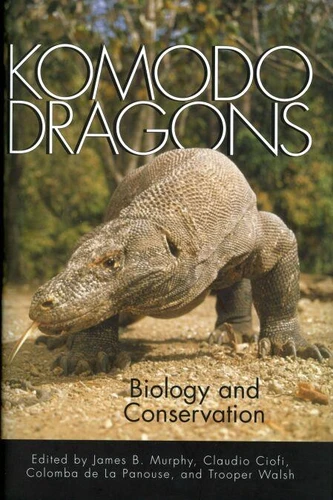Komodo Dragons: Komodo Dragons
Par :Formats :
Disponible dans votre compte client Decitre ou Furet du Nord dès validation de votre commande. Le format ePub protégé est :
- Compatible avec une lecture sur My Vivlio (smartphone, tablette, ordinateur)
- Compatible avec une lecture sur liseuses Vivlio
- Pour les liseuses autres que Vivlio, vous devez utiliser le logiciel Adobe Digital Edition. Non compatible avec la lecture sur les liseuses Kindle, Remarkable et Sony
- Non compatible avec un achat hors France métropolitaine
 , qui est-ce ?
, qui est-ce ?Notre partenaire de plateforme de lecture numérique où vous retrouverez l'ensemble de vos ebooks gratuitement
Pour en savoir plus sur nos ebooks, consultez notre aide en ligne ici
- Nombre de pages288
- FormatePub
- ISBN978-1-58834-513-4
- EAN9781588345134
- Date de parution31/03/2015
- Protection num.Adobe DRM
- Taille22 Mo
- Infos supplémentairesepub
- ÉditeurSmithsonian Books
- EditeurJames B. Murphy
- EditeurClaudio Ciofi
- EditeurColomba De La Panouse
Résumé
More than twenty years have passed since Walter Auffenberg's monumental The Behavioral Ecology of the Komodo Monitor. In the intervening years the populations of Komodo dragons-native only to a handful of islands in southeast Indonesia-have dwindled, sparking intensive conservation efforts. During the last two decades new information about these formidable predators has emerged, and the most important findings are clearly presented here.
A memoir from Walter Auffenberg and his son Kurt is followed by the latest information on Komodo dragon biology, ecology, population distribution, and behavior. The second part of the book is dedicated to step-by-step management and conservation techniques, both for wild and captive dragons. This successful model is a useful template for the conservation of other endangered species as well, for, as Kurt and Walter Auffenberg note, "The species may well indeed survive in the wild for generations to come while countless other organisms are lost."
A memoir from Walter Auffenberg and his son Kurt is followed by the latest information on Komodo dragon biology, ecology, population distribution, and behavior. The second part of the book is dedicated to step-by-step management and conservation techniques, both for wild and captive dragons. This successful model is a useful template for the conservation of other endangered species as well, for, as Kurt and Walter Auffenberg note, "The species may well indeed survive in the wild for generations to come while countless other organisms are lost."
More than twenty years have passed since Walter Auffenberg's monumental The Behavioral Ecology of the Komodo Monitor. In the intervening years the populations of Komodo dragons-native only to a handful of islands in southeast Indonesia-have dwindled, sparking intensive conservation efforts. During the last two decades new information about these formidable predators has emerged, and the most important findings are clearly presented here.
A memoir from Walter Auffenberg and his son Kurt is followed by the latest information on Komodo dragon biology, ecology, population distribution, and behavior. The second part of the book is dedicated to step-by-step management and conservation techniques, both for wild and captive dragons. This successful model is a useful template for the conservation of other endangered species as well, for, as Kurt and Walter Auffenberg note, "The species may well indeed survive in the wild for generations to come while countless other organisms are lost."
A memoir from Walter Auffenberg and his son Kurt is followed by the latest information on Komodo dragon biology, ecology, population distribution, and behavior. The second part of the book is dedicated to step-by-step management and conservation techniques, both for wild and captive dragons. This successful model is a useful template for the conservation of other endangered species as well, for, as Kurt and Walter Auffenberg note, "The species may well indeed survive in the wild for generations to come while countless other organisms are lost."



